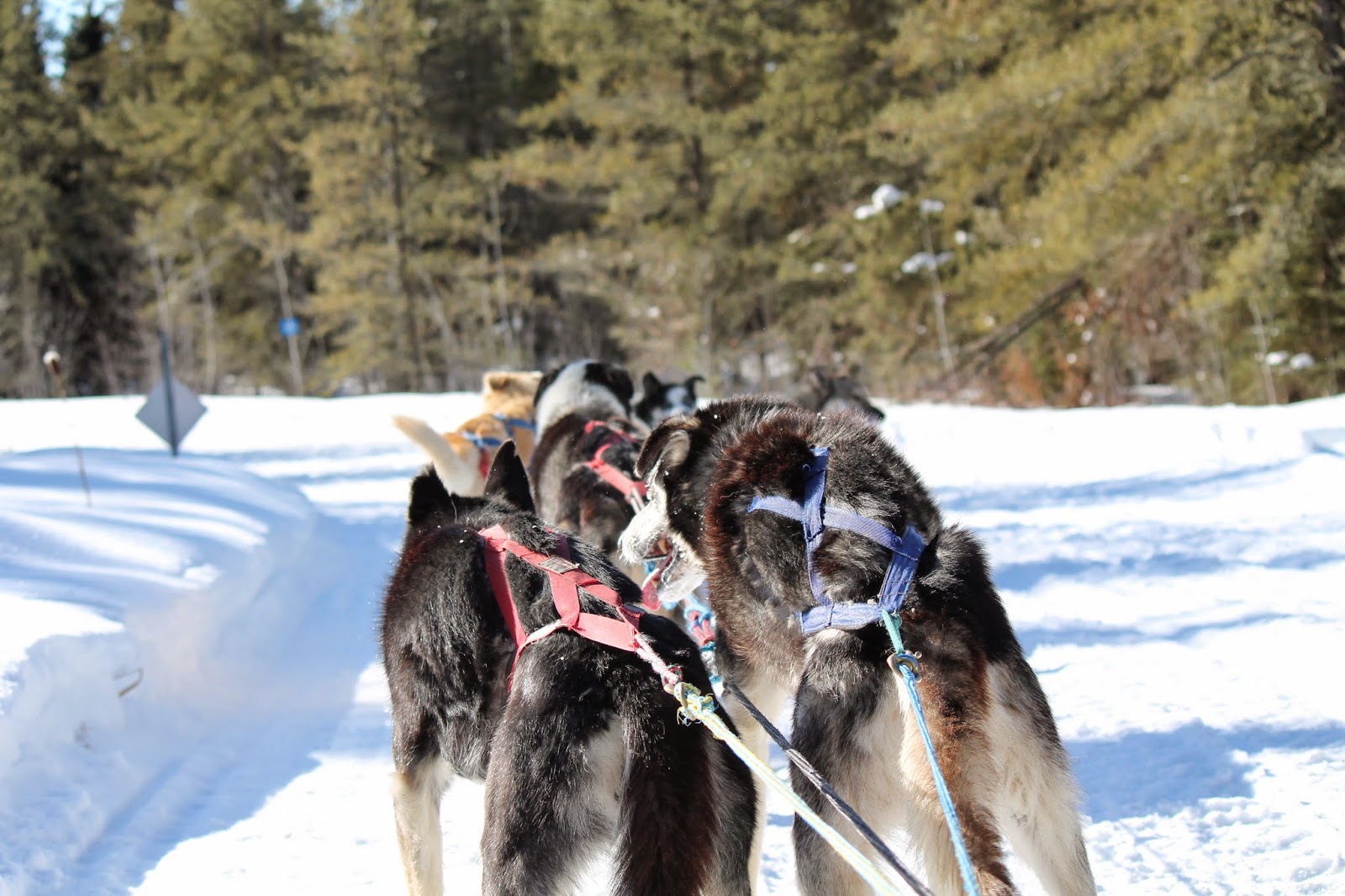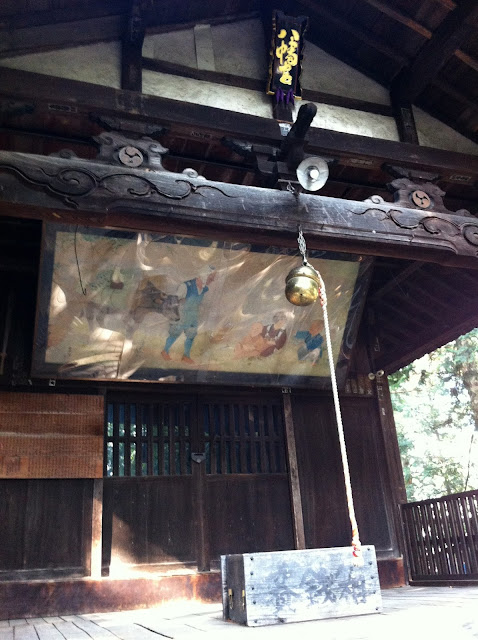August 23, 2013. Back in Canada again.... unbelievable.... just when I started to get used to Japan (again), flight back to Canada waiting for me (again). 2 days before leaving Japan, I decided to make one more small (well... ) side trip. I was thinking of going to Kamikouchi, but in order to enjoy the place I think I would have to spare at least 3 days... which I didn't have. So, after searching on japanguide.com, I decided Narai, maybe a good place to go on a day trip.
 |
| Yay! We made it ! |
To get to Narai, takes almost 3 hours by JR Chuo line. Very handy if you have JR Rail Pass. Without the rail pass, the trip cost around 2500 yen from Shin Moriyama, so will be a bit more from Nagoya station. Quite expensive. Take JR Chuo line bound for Tajimi, if possible all the way to Nakatsugawa, and better if it's a rapid train. If taking one to Tajimi, get off at Tajimi station and transfer to rapid train to Nakatsugawa. From Nakatsugawa, take JR line bound for Matsumoto, unfortunately only local train goes to Narai.... so fight for your seat! :D Get off at Narai station, Naraijuku main road is to the left of the station entrance. Since it's a small station, no ticket gate therefore on the way back ticket can be purchased on the train (the conductor will go around and you could ask him to sell you a ticket..... not sure how much English they could offer... you could always say 'sumimasen, kippu o kaitaindesu' then 'Narai eki kara (whichever station you wanna go to e.g Nagoya or Kanayama eki) made'.... or just hope he could speak a little English :D ... or use body language :D )
 |
Up this road (almost across from station entrance) to see Nihyaku Jizo (two
hundred jizo) and a shrine which I forgot the name |
Just a little background on this quite pleasant little town, it was a post town along Nakasendo, one of 5 routes to Edo (old Tokyo). I went to two different post towns along Nakasendo in January, called Magome and Tsumago juku. Narai was one of the most flourishing post town because it was near Torii pass, the highest peak to pass of Nakasendo and the most challenging. Narai became the place where people will rest to build the energy before going through Torii pass or after. Many overnight lodging and restaurants around the area, also the town is famous for lacquerware dishes. With this, Narai became the largest post town among others. Within the town there are many shrines and temples (never a shortage of those in Japan generally), also, up on the hills behind the main town area there are vast complex of cemeteries. Narai regarded as national treasure, therefore all the houses and buildings maintained its traditional characters. The pictures below shown some of the attractions of the town that I found, ones that are not in the pictures are the Mary Jizo (a Buddhist stone statue resembling the virgin Mary, traces of the hidden Christianity in Edo era) and the Nakamura house, a preserved original Edo townhouse. From one end of the town to the other took around 1 hr of slow walk along well maintained street flanked by old Japanese houses selling souvenirs, lacquerware, food etc. Quite the nostalgic walk, also if you explore a little bit, there are many little alleys between the houses and paths up to the forest which were nice to walk through in the scorching heat of Japan's summer. As I was walking down the street, I wonder how this town look in the past, where samurai and merchants went through the area for journey to or from Edo.

Further around 2 km from the main street area is the Torii pass, I didn't go there because I figure we won't have enough time, since train service is only every hour to Narai and we didn't want to get back home too late.
The train ride to the area was every pleasant on the eye. All along the way there are pretty little towns surrounded by green mountains and flanked by river. Since it's already in Nagano prefecture, I can imagine this area get quite white and cold in the winter. Narai itself surrounded by mountains (Nakasendo literally translated as passage in the mountains), beautiful green forests of big old trees. Definitely looks like a good place to do nature hike.
Surprisingly, Narai is not as famous as Magome or Tsumagojuku, why, I'm not sure of the answer because definitely Narai is a bigger post town compared to Magome and Tsumagojuku.
Narai worth the visit for sure.... though I should've gone earlier, so I have enough time to explore the city. I read just now that Narai could be reach from Yabuhara, where you can ascend the Torii mountain pass, 2-3 hrs journey and ended up in Narai...... FOR MY NEXT TIME! :D
 |
| Yes, no shortage of shrines.... |
 |
Nice garden at the temple.... I'm taking the picture not only because it's a nice little temple, also one day my garden will
look like this :D |
 |
| An example of the amazing trust system in Japan... and one of many things I love about Japan... The seller just left this nice bags of freshly picked green beans worth 100 yen each, and people just put money in the box if they wanna buy it and people don't steal it even though they could. Same thing I saw when I went to Shirakawa go. Would this work in Canada? I doubt it..... |
 |
| Shizume shrine |
 |
| A trail that I thought will lead to an adventure but instead leading to someone's house :D |
 |
| Naraijuku from the south end of the road...... hmmm.... very nostalgic! |
 |
| Wouldn't it be interesting to live here? Surrounded by tourists taking pictures of your house just because it looks so beautifully old? |
 |
| One of the many cemeteries there |
 |
| Ah yes... the shrine near two hundred jizo, which the arrows says 'this way' (to the right :D) for two hundred jizo |
 |
| What's with this house? looks more european than Japanese.... might have somethin to do with the Christianity influence ? Not even sure if the house is that old.... |
 |
| Nihyaku jizo (two hundred jizo).... I didn't count it.... too hot :D |
 |
| Oohashi, another attraction in Narai. Wooden bridge made of 300 year old cypress wood. |









 Then 2 days later as if nothing ever happened....... back to spring again... :D
Then 2 days later as if nothing ever happened....... back to spring again... :D























































